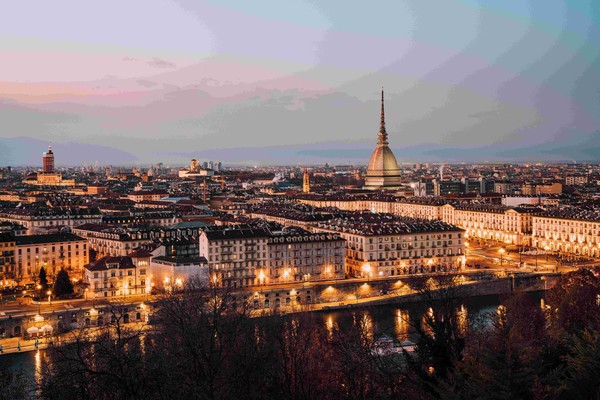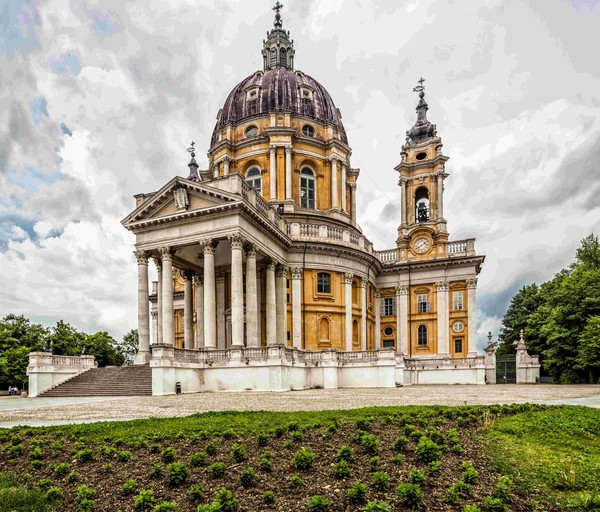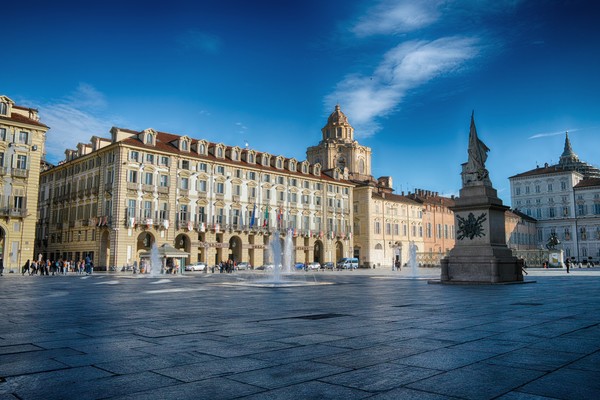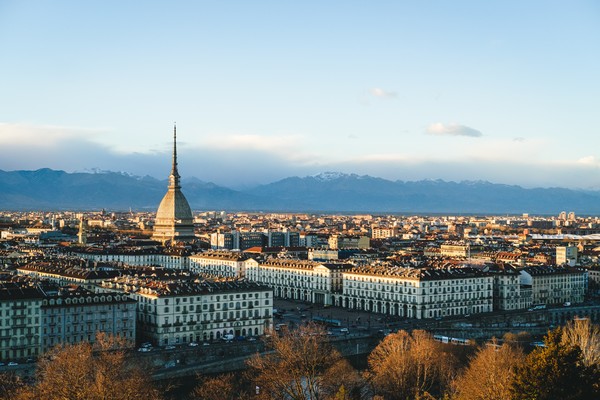Torino

[아츠앤컬쳐] 토리노는 이탈리아 북부의 밀라노와 제노바에서 그리 멀지 않은 수페르가언덕 기슭에 자리한다. 언덕과 같은 이름의 수페르가대성당이 이 언덕 꼭대기에서 도시를 내려다보고 있다. 매혹적인 이 바로크 양식의 성당은 건축가 필립포 유바라가 설계한 것이다. 토리노와 그 주변 지역의 여러 유명한 건물들과 궁전들의 뒤에는 이 건축가의 이름이 있는데, 카스텔로 광장의 왕궁과 팔라초 마다마, 스투핀지 궁전 및 이른바 프랑스 베르사유 궁전의 라이벌인 베나리아 레알레의 궁전이 그의 작품이다.
수페르가 대성당 외에도, 원래 유대교 회당으로 설계했으나 훗날 국립영화박물관으로 바뀐 몰레 안토넬리아나는 현재 전 세계적으로 유명한 토리노의 주요 랜드마크다. 토리노 시내를 걷다 보면, 최근에 개조된 이집트박물관을 방문할 수 있다. 카이로박물관에 이어 두 번째로 온전히 이집트학에 집중된 박물관이다. 이곳에서 불과 몇 미터 거리에 카리냐노광장과 카스텔로광장이 도심을 아름답게 장식하고 있다.

카스텔로광장에는 마다마궁전과 왕립박물관이 있다. 베르사유궁전에서 영감을 받은 왕립정원은 놀랍도록 잘 보존된 중세마을, 바로크성이 있는 아름다운 발렌티노공원과 함께 도시의 녹색 허파를 이룬다. 그란 마드레 디 디오성당 가까이 몬테 데이 카푸치니 언덕에는 산타 마리아 알 몬테 데이 카푸치니 성당이 있고 포강이 아래로 흐른다. 언덕에 오르면 토리노의 큰 광장 중 하나인 빗토리오 광장과 몰레 안토넬리아나를 비롯하여 숨막힐 듯 아름다운 전경을 감상할 수 있다.
토리노는 역사와 예술로 유명할 뿐만 아니라, 음식 역시 도시의 한 부분을 차지한다. 실제로, 최초의 초콜라티노(초콜릿 캔디)가 바로 이곳에서 탄생했다. 가장 유명한 초콜릿인 잔두이오또는 토리노의 유명한 카니발 가면극 잔두야의 이름을 딴 것인데, 카니발 기간에 이 초콜릿이 처음 등장했기 때문이다. 프리즘 모양의 잔두이오또는 설탕, 코코아, 헤이즐넛으로 만들어 금박 호일로 싼 것이다.

토리노 사람들은 초콜릿을 아주 좋아하여 매년 ‘초콜라토 페스티벌’을 개최하고 있다. 토리노의 초콜릿 역사는 1560년 사보이 왕가의 에마누엘레 필리베르토왕이 수도를 샹베리에서 토리노로 이전한 것을 축하하기 위해 도시 전체에 핫초콜릿을 제공하면서 시작되었다. 다른 초콜릿 특산품으로는 에스프레소와 초콜릿에 휘핑 크림이나 우유를 넣어 만든 음료인 비체린과 초콜릿 푸딩인 보네트, 아마레티 쿠키가 있다.
더불어 토리노는 돌체토, 네비올로, 프레이사(도심 포도원 퀸즈 빌라에서 생산)와 같은 고급와인, 크리미한 참치 소스를 곁들인 얇게 저민 송아지고기 비텔로 톤나토와 같은 풍미 가득한 요리들과 토마 치즈로도 유명하다.
또한 토리노는 피아트, 란차, 알파 로메오와 같은 유서 깊은 자동차 산업의 본거지이며, 유명한 축구단 유벤투스와 그 라이벌인 토리노 구단의 연고지이기도 하다.

토리노가 ‘마법의 도시’로 유명하다는 사실을 아는 사람은 많지 않다. 사실, 토리노는 리옹과 프라하를 잇는 화이트 매직 삼각형과 런던과 샌프란시스코를 잇는 블랙 매직 삼각형, 이 두 삼각형의 중심 도시다. 카스텔로 광장, 솔페리노 광장의 사계절 분수, 스타투토 광장, 그란 마드레성당과 같은 많은 랜드마크들은 모두 긍정적인 화이트 매직 에너지와 부정적인 블랙 매직 에너지의 중심이다.
번역 전익범 주한이탈리아문화원 문화담당

Torino
Not far away from Milan or Genoa, in northern Italy, Torino lies at the bottom of Superga hill, on top of which the namesake Basilica overlooks the city. The Basilica of Superga is an undoubtedly fascinating baroque church, designed by Architect Filippo Juvarra. Juvarra is the name behind other prominent buildings and palaces in Torino and surrounding areas such as the Royal Palace and Palazzo Madama in Piazza Castello and the Royal Residence of Stupinigi and the Palace of Venaria Reale, the so-called rival of French Palace of Versailles.
The city’s major landmark besides the Basilica of Superga is the Mole Antonelliana, designed by Alessandro Antonelli to originally be a synagogue, later turned into the now internationally renowned National Museum of Cinema.
Navigating the city center, one can visit the Egyptian Museum, recently renovated. It is the second most relevant museum entirely dedicated to Egyptology after the El Cairo one. Just a few meters away from it, Piazza Carignano and Piazza Castello decorate the city center. Piazza Castello is home to Palazzo Madama –the royal palace– and Musei Reali. The Parisian inspired Royal Gardens surrounding the Palaces are the green lung of the city, together with the exquisite Valentino Park, where the astonishingly well-preserved medieval village and the Baroque Castle, home to the Architecture Faculty, can be found. One can go up to Monte dei Cappuccini, a church overlooking the river Po, found just on the side of the Gran madre di Dio church, to get a breath-taking view of Piazza Vittorio –one of Torino’s biggest squares– and the Mole Antonelliana.

Not only is Torino known for its history and art, but food is intrinsically part of the city’s history as well. Indeed, the first ever cioccolatino (chocolate candy) was born here. The most famous type of Torino-made chocolate is the gianduiotto, named after the famous Carnival masque from Torino, Gianduja, because the chocolates first made their appearance during Carnival. Shaped like ingots and wrapped in gilded foil, gianduiotto is made with sugar, cocoa and hazelnuts.
Torino is so fond of chocolate that the city celebrates it yearly with the Cioccolatò festival. The history that ties Torino to chocolate began as early as 1560, when king Emanuele Filiberto of Savoy offered the whole city hot chocolate to celebrate the moving of the ducal capital city from Chambery to Torino. Other chocolate-made typical products are bicerin, a drink made of espresso, chocolate and whipped cream or milk and bonet, a pudding made with chocolate and amaretti.

However, Torino is also known for its prestigious wines, Dolcetto, Nebbiolo and Freisa (the latter is produced in Queen’s Villa urban vineyard) and savoury dishes, such as vitello tonnato, which is thin sliced veal with a creamy tuna-flavored sauce, and cheeses, like toma.
Torino is also home to historical automotive industries FIAT, Lancia and Alfa-Romeo and the famous Juventus Football Club and its rival Torino.
Not many know that Torino is famous to be the “Magic city”. Indeed, the city finds itself to be in the middle of the two triangles of white magic (with Lyon and Prague) and black magic (with London and San Francisco). Many landmarks such as Piazza Castello, the Four Seasons Fountain in Piazza Solferino, Piazza Statuto and Gran Madre church are all centers of either positive or negative magic energy.

글 | 미켈라 린다 마그리 Michela Linda Magrì
Director at the Italian Cultural Institute in Seoul
Cultural Attachè of the Embassy of Italy in Korea

